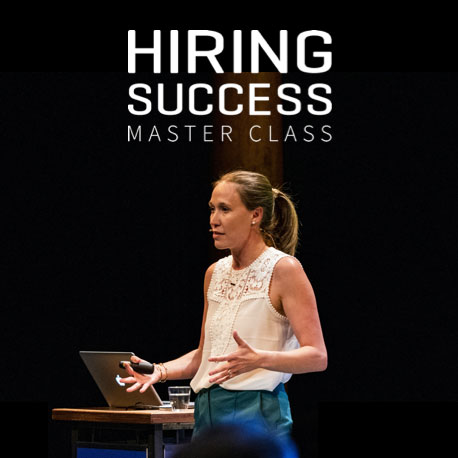Balance. Everything hangs in a delicate balance. Even the word itself rolls off the tongue, buoyed by two syllables that are perfectly balanced. It’s a condition, a state of being that most of us strive for, and when it’s disrupted the aftershock can be hard to recover from. How we respond, though, is our best line of defense. I’ve found this to be true for individuals and companies, too.
When the world turns on a dime, we have a tendency to anticipate the worst and respond accordingly. Yes, I’m looking at you, citizens of the world who stockpiled enough toilet paper to keep P&G afloat for the next decade. Fortunately, the worst case scenario usually doesn’t come to pass. At least I haven’t heard any reports of people being forced to go to the loo without their usual creature comforts.

Fending off disorder and maintaining balance is, to a certain extent, an active choice. It has to come from within. This is an important lesson for companies, too. Now not every business will be able to shield themselves from the inevitable. I get that. But for those who can, think about the things you can do from within to restore a sense of balance without planning for the worst possible outcome.
For example, many companies will start enforcing hiring freezes. Understandably. Does that mean your recruiters and hiring teams will no longer be of use to your company? As we say back in my hometown of London: “Not on your nellie!” In fact, there’s no shortage of tasks your talent function can immerse themselves in to prepare for the inevitable day (and it will come) when the Wall Streets of the world will once again be bullish and hiring top talent will soar to the top of your organization’s priorities. Below, I’ve compiled a list of suggestions on ways to weather a hiring freeze whilst maintaining productivity.
1) Take stock of your current state
If you’ve ever worked in retail or commerce, then you know just how important it is to regularly take stock of inventory. Companies that don’t are on the fast track to nowhere. Why stop there, though? Don’t limit yourself to merely taking stock of your products; include your people, processes, and technology, too. Be sure to closely examine your inventory from time to time—you might be surprised at what you find.
Here are some high-level points for considering:
- Team Structure: Recruiting is an external-facing function, similar to sales and marketing. Does your current roster of employees reflect that? Are there dedicated sourcers and recruitment marketers on your team? Are you lacking any key specialized roles such as HRIT analysts or admin?
- Skills Gap: Does your team measure and report upon its impact through data analysis? To what extent are your strategies and hiring processes informed by historical trends? Is there anyone on your team collecting post-hire feedback in an effort to improve hiring decisions?
- Candidate Experience: How easy is it for candidates to apply for an open position at your company? When was the last time someone in the company completed an application from start to finish? Are your applications mobile-friendly? Strive for a candidate experience that’s seamless and efficient.
- Tech Stack: When was the last time you thoroughly assessed the effectiveness of your applicant tracking system (ATS)? Is it as effective as it could be? This is especially important to consider if you’re using a legacy system that may have been innovative five to ten years ago, but could very well be outdated by now. Here are a handful of questions to ask yourself when making an assessment:
If the above checklist leaves a little something to be desired in the hearts and minds of your recruiters, then perhaps it’s time to enable your team to start shopping around—or just casually browse—for a new ATS. There’s a very good chance you might come across an alternative platform that will save your company time, resources, and money in the long run—by a long shot.
If you find yourself in that situation, the following point will become even more important.
2) Ensure alignment among internal stakeholders
There’s no “I” in the word team…but there is an “M” and an “E.” You’ll never be able to get around the fact that the people you work with, even when aligned on a shared vision, will always have specific, individual needs and concerns. And that’s perfectly fine. What separates the professionals from the amateurs is the ability to recognize that and demonstrate your ability—or your teams—to address and satisfy those needs and concerns.

Very few businesses can operate without a workforce. Many of them suffer without an exemplary workforce. A well-structured TA team can not only provide the latter, but do so efficiently, cost-effectively, and in a timely manner. You and your team members are surely aware of that—but can you demonstrate that to other key stakeholders in your company? And in a manner that will get you buy-in for new initiatives, processes, tech, and so forth.
Now’s the time to conduct an analysis of key stakeholders, pinpoint their motivations and concerns, find ways to strategically align with them, and make your team’s value irrefutable and crystal clear.
3) Widen your talent pool through recruitment marketing
The modern recruiter should be adept at inbound marketing and able to create convincing content—such as blog posts—that portrays the personality of your company, its values and objectives, as well as provide some insight as to what it’s like to work there. This may sound like a minor task, but keep in mind that on WordPress alone, nearly 3 million blog posts are published each day and the average time spent on blog posts is only 16 seconds.
To some, this might seem like an odd thing to prioritize, but remember that just like a marketer, recruitment marketers must necessarily use a “marketing mix.” And, in light of current affairs, it’s one of the—if not the most important asset—both marketers and recruiters have at their disposal.
Oh, and while we’re on the topic of writing— do yourself a favor and revisit your company’s job descriptions and find ways to polish up the verbiage and make the roles you’re hiring for more attractive.
4) Prioritize internal mobility and talent mapping
As recruiters, sometimes we can become so laser focused on searching for talent outside the organization, that we look past qualified candidates that are already an integrated part of the company. Of course, it won’t be possible to fulfill every staffing need through internal mobility, but when hiring budgets are tight or non-existent, every single resource counts. Internal recruitment is an often overlooked but highly beneficial recruitment practice.
And, when you count the dollars (or Euros of pounds) and cents, internal talent mapping has its advantages. It takes less time and money to hire candidates and, compared to external hires, the starting salary of an internal hire is on average 18-20% less expensive.
5) Bridge skills gaps through independent micro-learning
We all know that there’s really no such thing as the off season for professional athletes. Even when they’re out of the public eye, they’re exercising routinely, studying strategy with their coaches and teammates, and mentally preparing for the season ahead. By doing so, they ensure that they’ll be able to compete and perform at 110%.
You can view a hiring freeze as the off season for your talent teams. They might not be in the “public eye” of your company for the next few months, but rest assured that when the economy enters an upswing—and it will—you don’t want to find yourself with a roster of recruiters that are malnourished, out of shape, and all around unready to charge into the next season of hiring with the intensity and vigor that your company will need to succeed.

Use the insights you’ve gained by taking stock of your current state and identify skills that your team could benefit from. Find cost-effective ways for team members to acquire those skills, or encourage them to network with local professionals who might be able to help them develop new chops, as it were.
The above suggestions are just a few of the many things recruiters and hiring teams can do to stay productive and ensure the overall balance and health of the organizations they work for in the midst of a sluggish economy. For more information on how to evaluate, strategize, transform, and optimize your hiring function, there’s no better resource than The Definitive Guide to Hiring Success.
If you’ve got any questions or could use some advice on how to keep your TA team balanced in the coming weeks and months, feel free to leave your comments below. I’m always happy to lend a helping hand to fellow recruiters.

 Enroll in the Master Class & earn 6 SHRM credits
Enroll in the Master Class & earn 6 SHRM credits